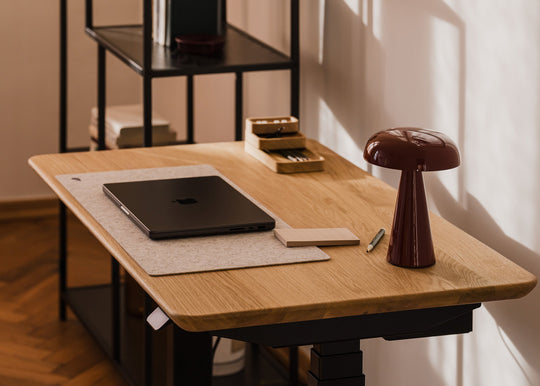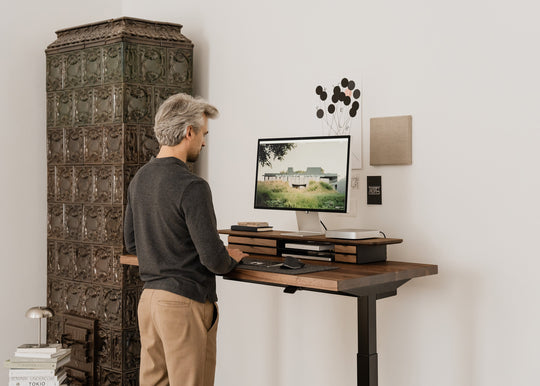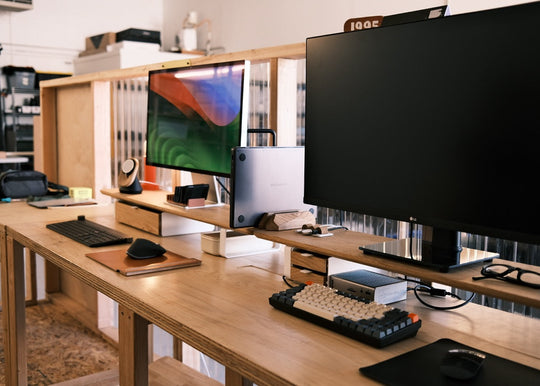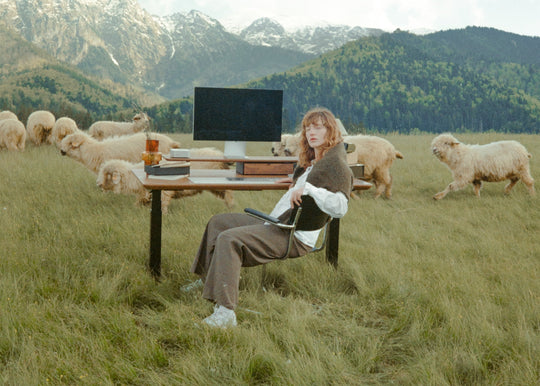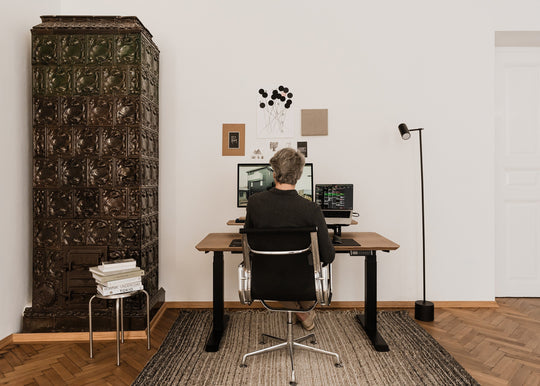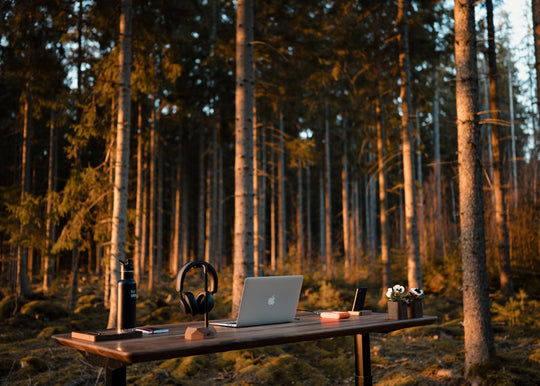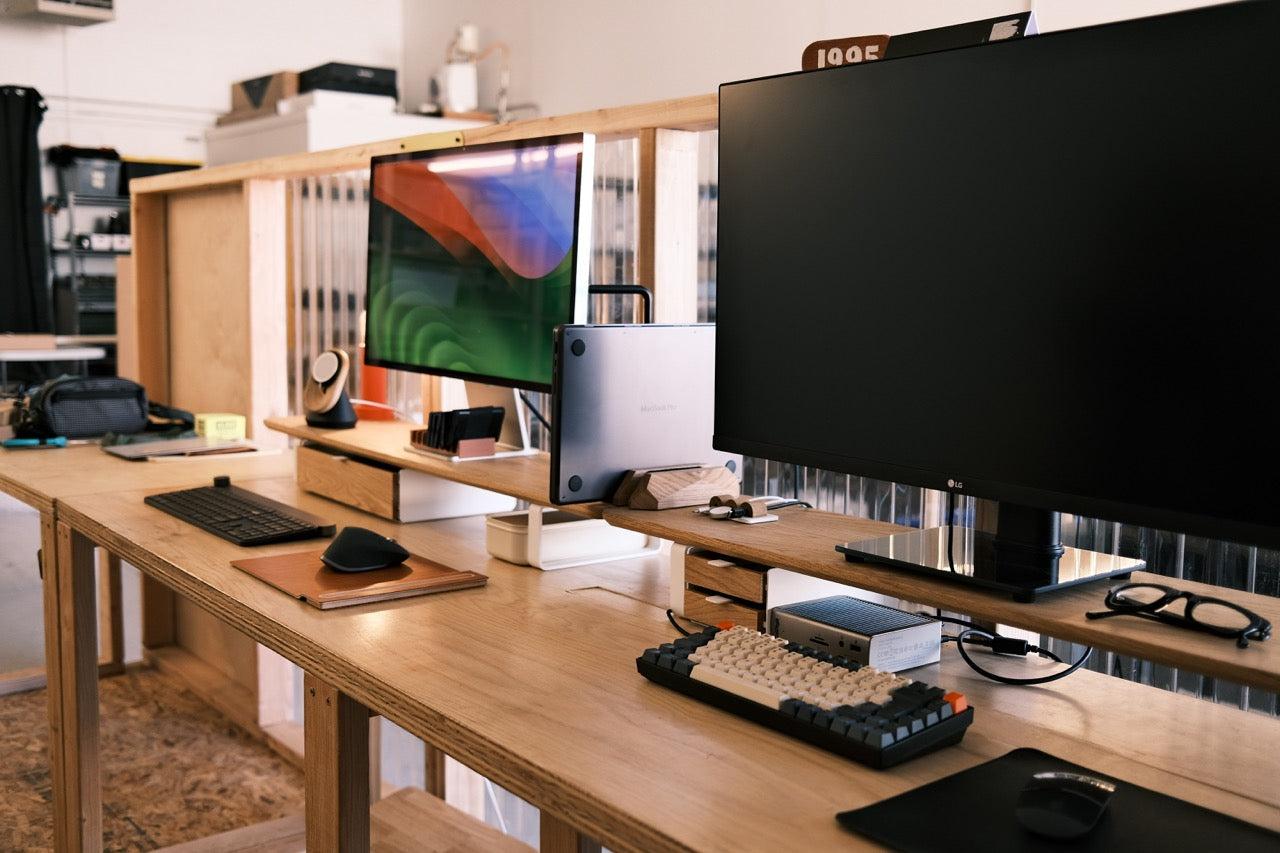
Home office inspirations: a workspace for two
Sharing a home office can turn out to be quite a logistical–aesthetic experiment. It’s not just two chairs and two computers — it’s a geometric arrangement of compromises. Within its boundaries, two body clocks, two temperaments, and even two breathing rhythms intersect. But on the other hand, a shared office promises an exchange of creative energy and ideas. Designing such a space means designing not only an interior, but also a relationship. Today, we’ll share how to approach this — and show you how some of the digital creators we work with have tackled the challenge.

One shared desk or two separate territories?
The first question to ask is: will this office be a place for collaborative work, or for two parallel journeys?
A single large desk is ideal for creative duos — designers, digital creators, architects — who like their ideas to instantly echo in the other person’s mind. A wide surface — preferably wooden and pleasant to the touch — gives room for notes, material samples, sketchbooks, optimally placed monitors or laptops, and any additional tools needed daily. In this case, access to light from both sides and a symmetrical setup is key, so no one feels like a “guest” at the desk.
With our unique 2.5-meter handmade duo desk, there are moments where one of us wants to stand and the other wants to stay seated. On average, we work standing around 4–6 hours a week – it’s a perfect reset in the middle of the day before diving back into deep focus work while seated. As a couple running a creative business together, having a high-quality, thoughtfully designed workspace has made everything feel smoother and more connected. We’ve developed a rhythm that feels more balanced, and the ability to alternate between sitting and standing has really boosted our productivity and comfort.
Two smaller desks suit those who need a mental wall between their world and their partner’s. They can be placed side by side (for a sense of closeness), in an L-shape (for efficient space division), or face-to-face (for a conversational feel — though that requires good acoustics).

Working together or in completely different fields?
Two people in the same profession often follow a similar rhythm. In that case, you can synchronize work hours, set up a single overhead light source, and use similar tools.
But if one person holds online meetings while the other quietly codes, answers emails, or designs graphics, it’s essential to create zones: acoustic panels, mobile partitions, or even thick curtains that work like a stage backdrop between scenes. Investing in good noise-cancelling headphones is also worthwhile.
Aesthetic similarities and differences
Shared tastes make things easier — you can create a cohesive visual style: minimalist, industrial rawness, or a boho-inspired office full of plants. But what if one dreams of Scandinavian white and the other of dark wood with brass accents?
The solution may be to divide the room into micro-worlds. A shared base (floor, wall color) remains neutral, while each individual area is personalized with accessories: a lamp, organizers, artwork, or a poster above the desk. This way, everyone gets to breathe their own aesthetic air.

Working hours: standard 9–5 or flexible schedules?
If you both work 9 to 5, it’s easy to sync your day — coffee breaks together, a walk outside, switching off computers at the same time. But if one works mornings and the other afternoons or evenings, the office becomes a relay baton passed between you.
In that case, a height-adjustable desk is ideal, making it easy to switch settings between users. Two separate chairs, each tailored to personal preferences, also prevent the daily hassle of constant adjustments.
Height — a small detail, but a big foundation
A couple of similar heights can share the same desk and chair settings. But if there’s a significant difference, average settings will be uncomfortable for both. Again, an ergonomic adjustable desk or two separate desks can solve the problem. Footrests are also worth considering, so shorter legs don’t dangle — a small thing that can save your spine.
Organizing the space — the fight against chaos
Two desks, two workstations — double the cables, documents, and small items that tend to multiply uncontrollably. It’s best to plan ahead:
- a cable organizer under each desk,
- a shared shelf for the printer and spare paper,
- individual containers, trays, and drawers for supplies,
- extra desktop shelves and wall-mounted shelves to optimize space,
- separate corkboards or magnetic boards to keep projects and deadlines from mixing.

The art of compromise — balancing different personalities
The biggest challenge in a shared home office isn’t space — it’s psychology. One person needs complete silence, the other prefers a soundtrack for their work. One loves perfect order, the other thrives in creative chaos. Here, interior design alone won’t solve the problem — you need an agreement. This could take the form of:
- a “quiet hours” schedule,
- a boundary line on the desk where no one’s notes cross over,
- a rule that each person tidies their own area at the end of the day.
Simple ground rules established early can give structure to a shared space.
The office as a metaphor for a relationship
Designing an office for two is a bit like writing a duet for two instruments. You need harmony, but also space for solo performances. The desk, accessories, chair, lamp — these are just props. The real project is daily coexistence in the same space. The office then becomes a kind of laboratory of closeness — a place where you learn that ergonomics isn’t just about posture, desk height, or screen level, but also about how you look at each other over the top of the monitor.


